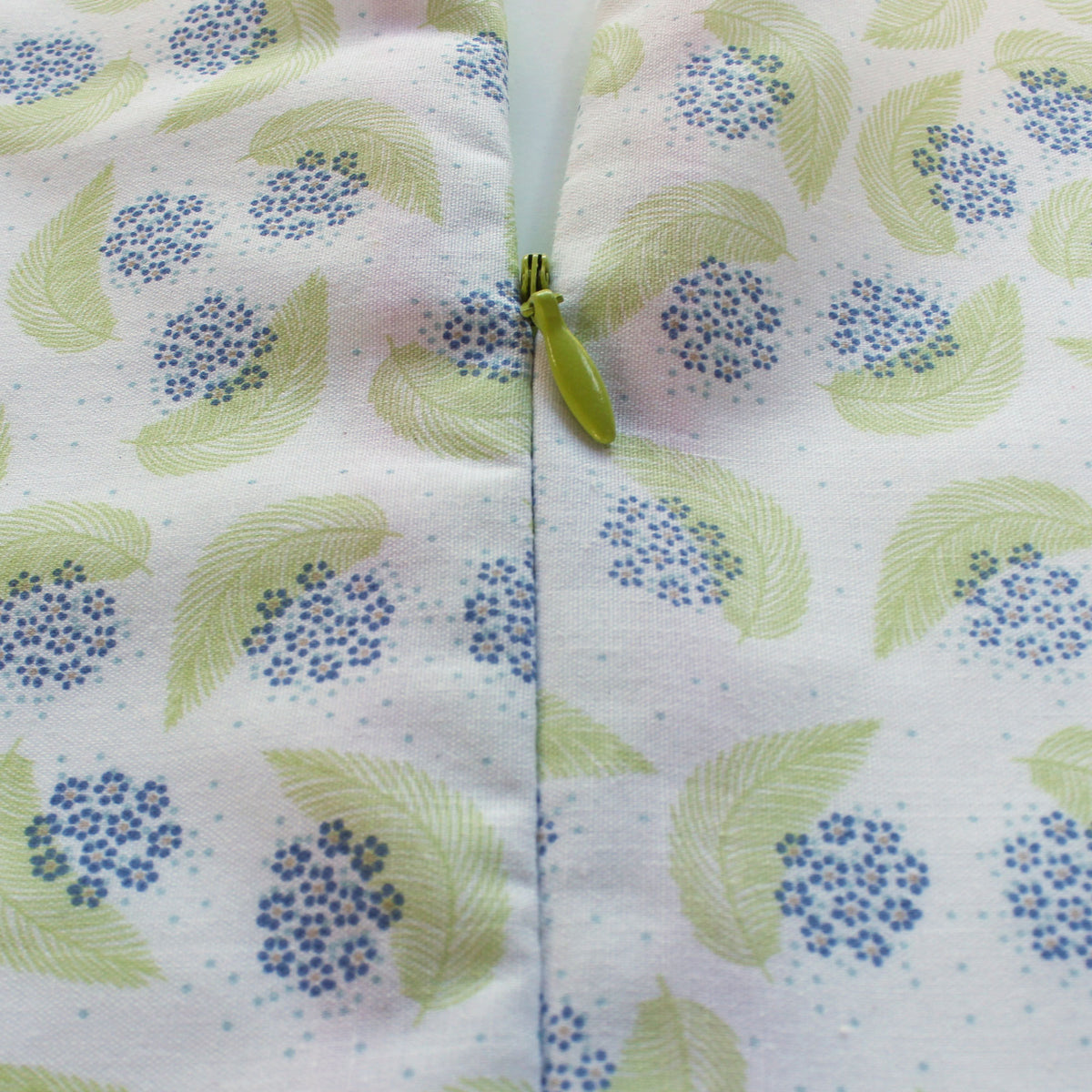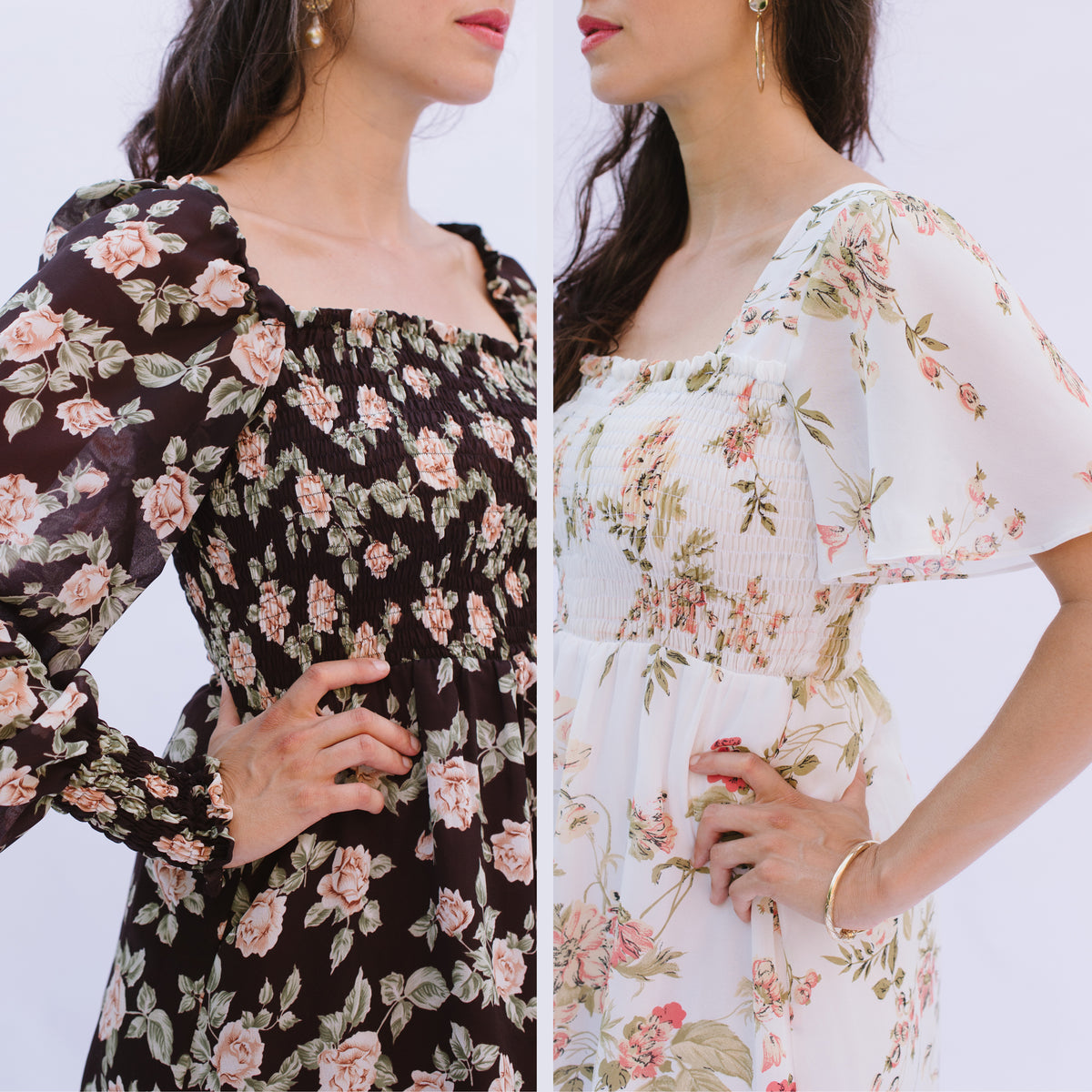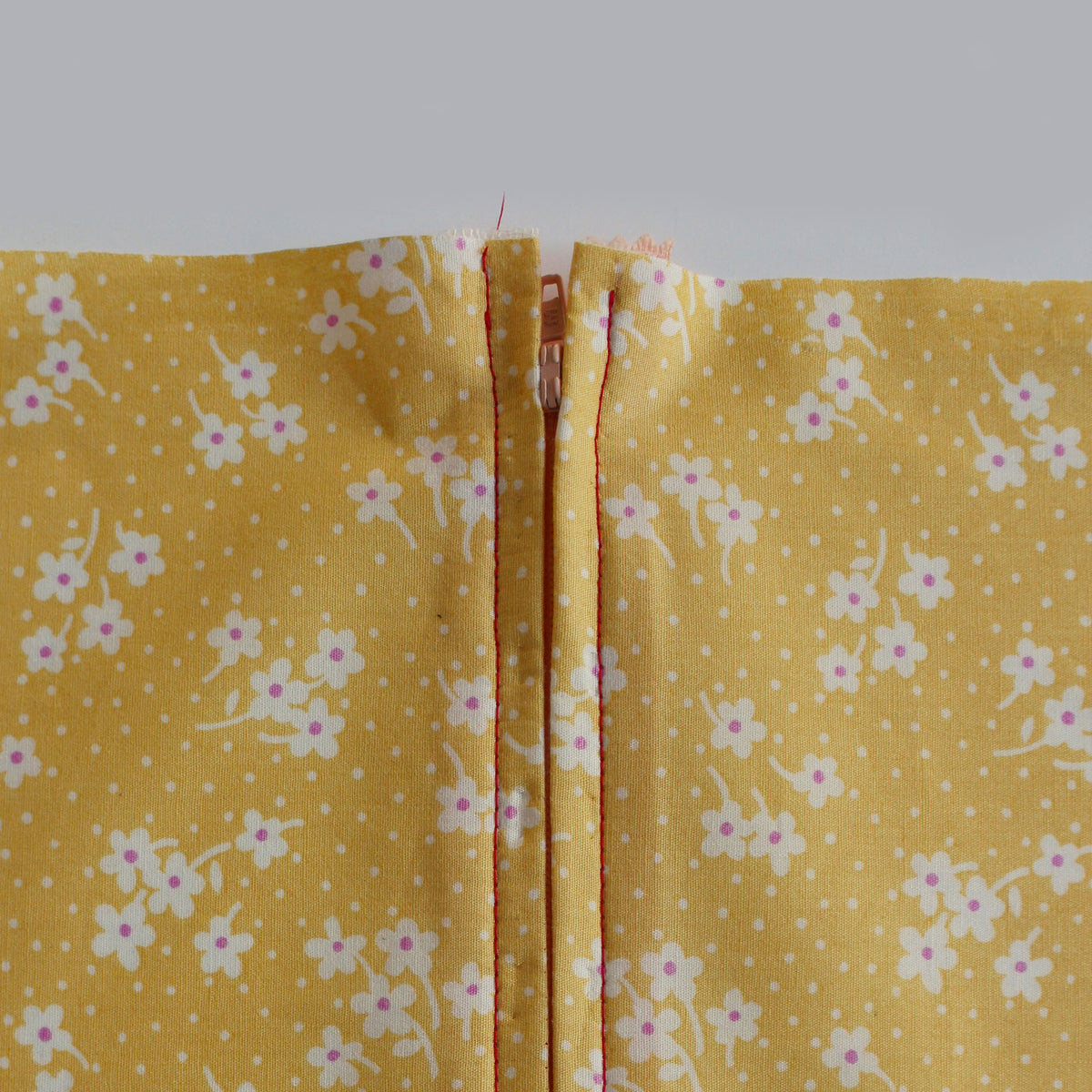Welcome to day 1 of the Jackie sewalong! I'm so excited to have you join in on this project. I hope that you learn a lot from this series and I can't wait to see your dresses at the end of the month. It's time to gather your fabric and supplies for the Jackie Sewalong. We'll be starting to cut out the dress next week, so you'll have some time to pick out your fabric.
In this post, we'll talk about the supplies needed for the project along with choosing your fabric for Jackie. We will discuss 2-way versus 4-way stretch, fabric weight and drape and selecting interfacing for knits.
Let's get started!
Supplies:

- Sewing machine needle: Stretch or ball-point sewing machine needle appropriate for the weight of your fabric.
- Twin needle: (Optional) ball point needle for hem finishing.
- Hand sewing needle
- Interfacing: Trico fusible interfacing for knit fabric.
- Buttons: Three 3/8" ball and shank buttons.
- Thread: One spool of all-purpose thread. If using a twin needle, you will need two spools of thread.
- Serger thread: If sewing the project on a serger, you will need 4 cones of serger thread.
- Clear elastic tape: 1/4" wide. If you can't find this elastic tape, worry not. I'll have a second option for you in a later post.
Sewing Tools:

- Shears: to cut your fabric.
- Snips: to trim threads as you sew.
- Small scissors: to clip and grade fabric during construction.
- Seam ripper: to fix mistakes.
- Pins: to pin pattern pieces to the fabric and to hold fabric together while sewing.
- Measuring tape: to take body measurements and to align grainline to selvage when laying out the pattern.
- Seam gauge: for repetitive measurements, like the hem of a dress.
- Water-soluble fabric marker: to transfer pattern markings to your fabric.
-
Loop turner: for turning out button loops.
Pressing Tools:

- Press cloth: to protect your fabric from the heat of the iron.
- Tailors ham: to assist in the pressing of curved seams.
- Iron
- Ironing board
Fabric
The recommended fabric for Jackie is a light to medium weight knit with a moderate to high drape and at least twenty percent stretch. The two versions for this style allow you to cater the pattern for both dressy and casual purposes. Depending on your choice of fabric, you can create a dress suitable for any season or occasion. You can take a look at some of the makes from the sewing community to get inspired for your own dress. This may be your first time working with knit, so let's break down weight, drape, and stretch so that you'll feel confident when shopping for your fabric.

Weight & Drape
Weight is how much body the fabric has. You may choose a heavier weight knit is your looking to make a dress for the cooler seasons and a lighter weight fabric for the spring of summer.
Drape is the way a fabric flows when worn. A fabric with a higher drape will have more movement and will lay closer to the body, whereas a lower drape fabric will have less movement and stand further away from the body. I always like to wrap the bolt of fabric around me to better imagine how the drape will work with the dress.

Drape can be classified into three gerneral segments: high, medium and low.
Jackie is a figure flattering dress and since it is made with knit fabric, it tends to drape closer to the body than a woven fabric. Some suitable fabrics are jersey knit or interlock knit which are available in various fiber contents. You may choose something a bit fancy such as a velour knit. If you’re wanting to make a less body-conscious dress, you can choose a fabric with a lower drape, such as ponte or scuba. You can also go with darker colour or choose something with a texture or print.
Stretch
When shopping for your knit fabric, you'll encounter two-way and four-way stretch.
Two-way stretch fabric means that fabric can stretch and recover along the crossgrain (selvage to selvage).
Four-way stretch means that the fabric can stretch and recover along the crosswise and lengthwise grain.

Jackie is best sewn with a two-way stretch knit fabric that has at least 20% stretch. To determine the percentage of stretch in your knit fabric and to ensure that it has at least 20% stretch, you can use the stretch gauge that comes with the pattern.

To use this gauge, hold a width of the crosswise grain of your fabric between your fingers. The width should be equal to the length of the grey portion of the gauge. For accuracy, you can insert a pin into your fabric at either end of the grey box. Hold the fabric stationary on the left side and stretch the fabric over towards the end of the gauge on the right hand side. If it can stretch to the end of the gauge without straining the fabric, you'll find that your fabric has at least 20% stretch. If it stretches well past the gauge, then the fabric has a greater percentage of stretch. 
If you use a fabric with a significantly greater percentage of stretch, you'll simply find that the fit of the garment will be looser as the fabric has more stretch. You may choose to go down in size, or better yet, make a bodice muslin (which we'll discuss in a later post) to determine the fit of your dress with your chosen fabric.
Knit Interfacing
When choosing an interfacing for knit fabric, it is important to use an interfacing suitable for knits so that it will be compatible with the stretch, weight and drape of the fabric. Fusible knit interfacing, or Tricot, is sheer, lightweight and soft. You can also use a fusible nonwoven interfacing, or Pellon. This has stretch in all directions and can be used for knit.
Overall, you will want to select an interfacing that is lighter than or equal to the weight of your fabric and that has have a soft and supple drape. Also, make sure that the colour of your interfacing is compatible with your fabric and that it doesn't show through to the right side, altering the color of the fabric.
I'll be guiding you through how to apply this interfacing to your fabric pieces in a later tutorial.

Lightweight Trico interfacing in black and white.
Purchasing yardage:
In our next post, we will determine our size which will allow you to know how much fabric you need for your project. If you have chosen a fabric with a print or a directional fabric where there is a difference in colour shading due to nap, or if you've chosen a stripe or a plaid, you will need to purchase additional fabric. You may choose to lengthen your pattern or you may decide to make a muslin, in which case you will also need to buy additional fabric.
YOU MAY ALSO LIKE:





